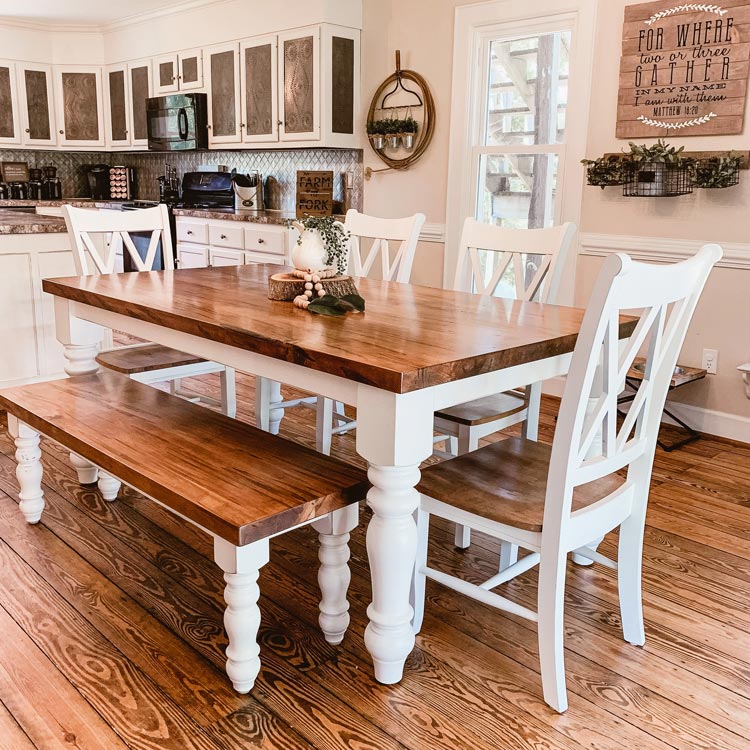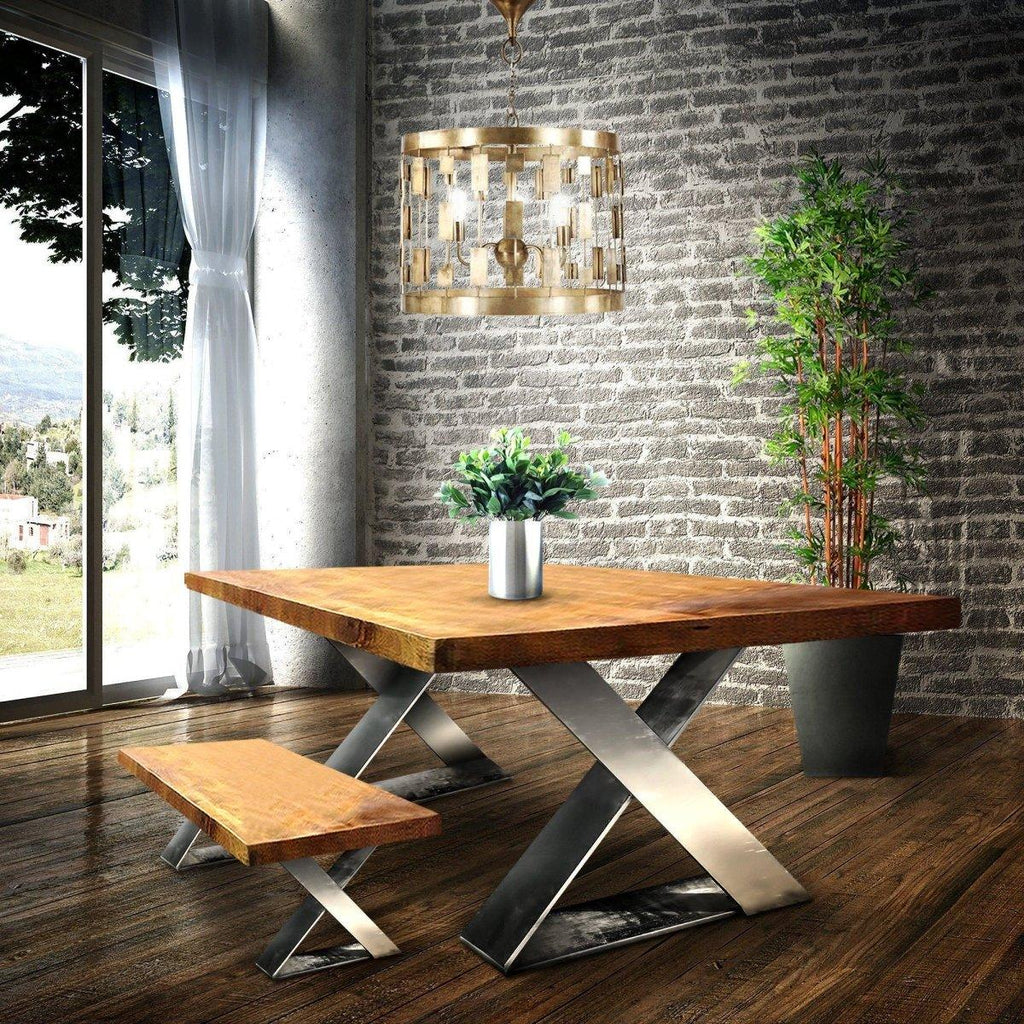Transform Your Dining Space with Stylish Dining Room Table Legs
From Traditional to Modern: Find the Ideal Dining-room Table Legs for Your Design
The choice of dining room table legs plays an essential role in specifying the general character of your room, connecting the void in between standard workmanship and modern-day looks. While traditional styles such as cabriole and transformed legs evoke a sense of classic class, contemporary styles like barrette and geometric options offer an opportunity for striking aesthetic passion. Examining the best balance between these styles calls for a nuanced understanding of your existing decoration and individual preference. As you take into consideration these elements, the concern continues to be: how can you flawlessly integrate these varied leg designs to produce an unified dining experience?
Comprehending Table Leg Styles
The selection of dining-room table leg styles can substantially influence both the appearances and capability of the area. Each leg style contributes special sensible attributes and visual aspects, satisfying diverse design choices and use needs. Comprehending these designs is crucial for choosing the best eating table that aligns with your general interior layout vision.
For circumstances, tapered legs provide a tidy, classic look that can boost an area's sophistication, while pedestal bases offer security and make best use of legroom, making them perfect for smaller sized spaces. Hairpin legs, a trademark of mid-century contemporary layout, introduce a commercial style, permitting an airy, open feel. Similarly, trestle legs evoke rustic appeal, supplying robust assistance and a feeling of timelessness.
In addition, the selection of materials plays a substantial duty. Wooden legs can bring heat and appearance, whereas steel choices frequently communicate a smooth, contemporary ambiance. Inevitably, comprehending table leg designs is vital for developing a cohesive dining location that mirrors personal style while ensuring functionality and comfort. By thoughtfully taking into consideration these aspects, you can boost both the practical and aesthetic appeal of your eating space.
Standard Table Leg Options
When selecting dining space table legs, typical options usually symbolize ageless elegance and craftsmanship. These layouts mirror a rich heritage and a commitment to quality, making them optimal for those that appreciate classic aesthetic appeals.
Among the most renowned traditional leg styles is the cabriole leg, identified by its graceful bent shape. This layout frequently includes attractive makings and is most commonly found in Queen Anne and Chippendale furnishings. One more prominent choice is the transformed leg, which boasts a collection of smooth, rounded shapes that give a traditional appearance while keeping security.
Furthermore, the straight leg, while simple, uses a tough and basic framework that can mix seamlessly with a selection of tabletop designs. For those drawn to ornate outlining, claw-and-ball feet legs stimulate a feeling of magnificence and can work as a spectacular prime focus in any type of eating room.
Finally, stand bases, although not purely legs, give an alternate traditional choice that permits ample legroom and can be beautifully sculpted. Each of these typical leg styles contributes to the general setting of a dining-room, marrying function with visual allure.

Modern Table Leg Layouts
Modern table leg designs use a diverse range of styles that highlight clean lines and cutting-edge products. These layouts usually focus on capability while functioning as striking prime focus within a dining space. Minimal looks prevail, with legs crafted from materials such as steel, glass, and engineered wood, which contribute to a modern and airy feeling.
One popular design is the barrette leg, identified by its slender, conical framework that gives stability without overwhelming the table top (dining room table legs). This style is frequently found in mid-century modern furniture and can effortlessly enhance various dining table forms. Another fad is the use of geometric shapes, where legs may take on unbalanced or angular types, adding aesthetic interest and a touch of virtuosity

Mixing Styles for Special Areas
Often, house owners seek to produce one-of-a-kind dining spaces that show their personal design by mixing various style aspects. This method permits the unification of diverse aesthetic appeals, causing a harmonious yet unique setting. Combining a rustic wooden table with sleek, contemporary steel legs can create an appealing comparison that raises the space's total appeal.
Furthermore, incorporating vintage table legs with contemporary table tops can evoke a feeling of background while keeping a contemporary sensibility. Such combinations not just Check Out Your URL display specific preference yet also urge creativity, enabling homeowners to curate an area that feels both personal and inviting.
Shade plays an important duty in this mixing process; picking table legs that match or comparison with the existing color design can enhance visual interest. Whitewashed legs can soften the boldness of a dark table surface area, producing a balanced aesthetic.
Tips for Selecting the Right Legs
Picking the right table legs is crucial for achieving both capability and aesthetic appeal in your dining area. Begin by considering the total style of your area. Standard settings profit from legs that feature complex makings or transformed layouts, while modern spaces may call for streamlined, minimalist styles.
Next, evaluate the height and security of the legs. dining room table legs. Common dining tables range in between 28 to 30 inches in height, so ensure the legs match Go Here this measurement look at more info for convenience. In addition, robust products, such as hardwood or metal, can boost stability and durability
Assess the leg form as well-- choices consist of directly, tapered, or stand designs. Straight legs supply a timeless look, while conical legs can include a touch of elegance. Pedestal bases offer sufficient legroom and are suitable for smaller sized spaces.
Verdict
In summary, choosing the optimal dining space table legs calls for cautious consideration of both typical and modern styles. By harmonizing leg design, height, and product with the total décor, a cohesive and welcoming environment can be achieved.
The variety of dining area table leg designs can dramatically affect both the looks and performance of the space. Ultimately, comprehending table leg styles is important for producing a cohesive eating area that mirrors individual style while ensuring practicality and comfort.One of the most legendary standard leg styles is the cabriole leg, characterized by its graceful bent shape. Straight legs provide a traditional look, while tapered legs can add a touch of style.In recap, selecting the ideal dining area table legs requires mindful consideration of both modern-day and typical designs.